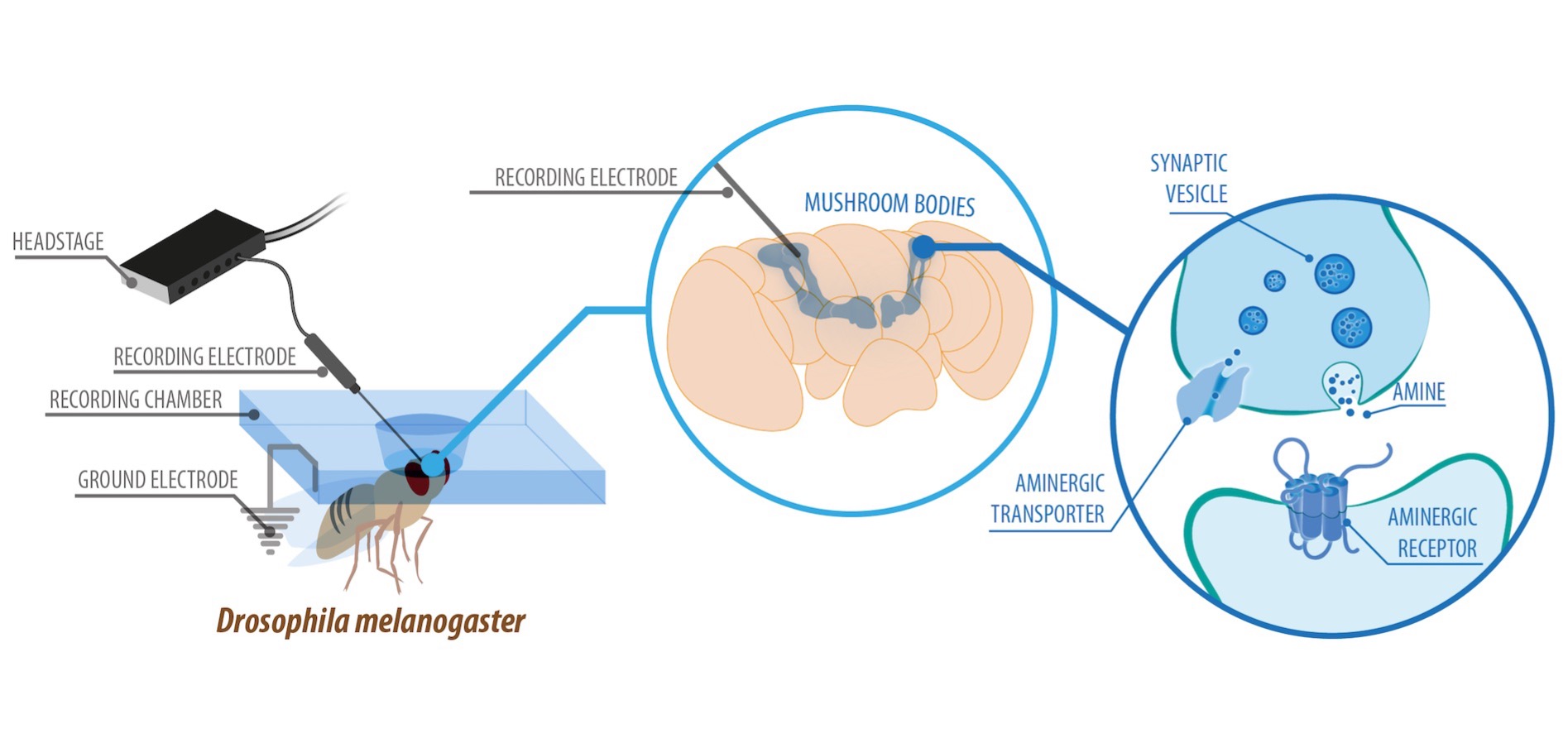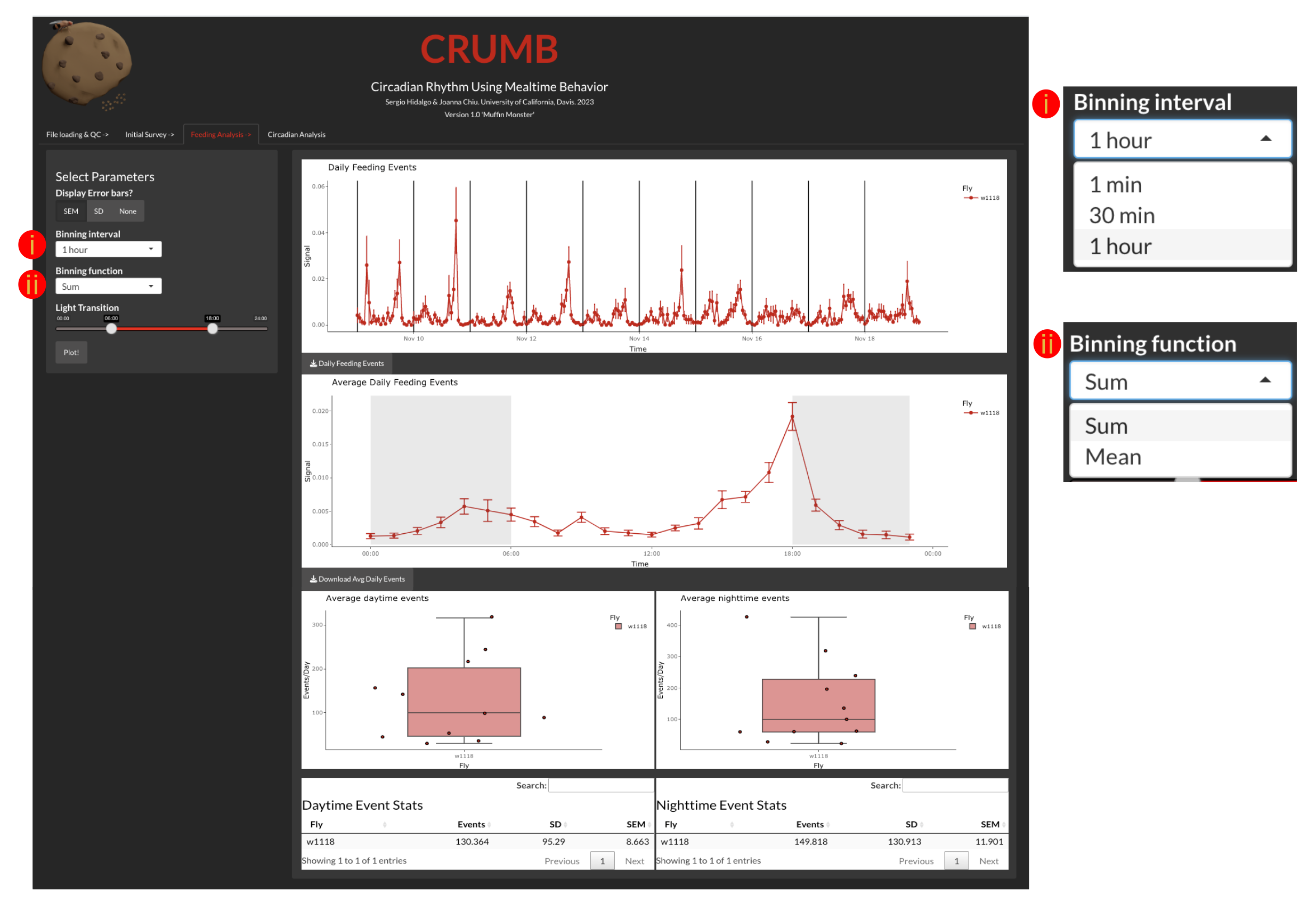Detection and identification of biogenic amines in flies
Electrochemical detection: We have adapted and established protocols to detect the release of several biogenic amines, including dopamine (DA) and serotonin (5-hydroxytryptamine; 5-HT). We have successfully used high-speed chronoamperometry (HSC) and Fast-Scan Cyclic Voltammetry (FSCV) to detect the release of BAs directly from brains ex vivo and in vivo.
Fluorescent sensors: The advancement in directed evolution and understanding protein structure has opened the door for the development of improved genetically encoded sensors to detect neurotransmitters. Through extensive collaborations, we generate and adapt sensors for use in neuroscience research.
Selected publications:
- Fuenzalida-Uribe, N.,Hidalgo, S., Varas, R., Campusano, J.M. (2016). Study of the Contribution of Nicotinic Receptors to the Release of Endogenous Biogenic Amines in Drosophila Brain. In: Li, M. (eds) Nicotinic Acetylcholine Receptor Technologies. Neuromethods, vol 117. Humana Press, New York, NY. doi: https://doi.org/10.1007/978-1-4939-3768-4_4
- Hidalgo, S., Fuenzalida-Uribe, N., Molina-Mateo, D., Escobar, A. P., Oliva, C., España, R. A., Andrés, M. E., & Campusano, J. M. (2021). Study of the release of endogenous amines in Drosophila brain in vivo in response to stimuli linked to aversive olfactory conditioning. Journal of neurochemistry, 156(3), 337–351. doi: 10.1111/jnc.15109

Development of platforms to analyze behavior
Sleep, locomotion, and feeding are among the many processes that are regulated by the circadian clock. The accurate measurement of the changes in this rhythmicity is important to determine circadian disruption or seasonal adaptations. Our lab is committed to improving the reproducibility of circadian behavioral assays by using and developing automatized tools for data analysis. Check our recent Shiny-app CRUMB (Circadian Rhythm Using Mealtime Behavior)
Selected publications:
- Cai, Y.D., Hidalgo Sotelo, S.I., Jackson, K.C., Chiu, J.C. (2022). Assaying Circadian Locomotor Activity Rhythm in Drosophila. In: Hirota, T., Hatori, M., Panda, S. (eds) Circadian Clocks. Neuromethods, vol 186. Humana, New York, NY. doi: 10.1007/978-1-0716-2577-4_3
- Hidalgo S and Chiu JC. CRUMB: a shiny-based app to analyze rhythmic feeding in Drosophila using the FLIC system [version 2; peer review: 2 approved]. F1000Research 2023, 12:374 doi: 10.12688/f1000research.132587.2
